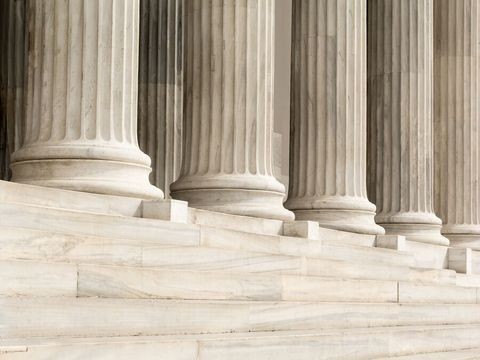Transition 2021: Shining a Light on Midnight Rules and the Biden Regulatory Agenda
Client Alert | 9 min read | 01.13.21
Although the focus of any new administration is often on the executive actions that can be taken on day one or during the first 100 days to achieve its top policy objectives, the incoming Biden Administration will need to navigate a number of administrative law issues as it considers ways to advance its agenda while altering or undoing the Trump Administration’s regulatory legacy.
The new administration will have to contend with administrative law principles requiring notice and comment and public participation, which may delay its plans to quickly rescind or replace the outgoing administration’s regulations. In its push to overturn the Trump administration’s rules, the Biden administration and its allies on Capitol Hill also will have to balance how the Congressional Review Act can be used to quickly disapprove an existing rule with the potential that it could prevent the issuance of a more stringent replacement rule in its place.
Regulatory Delay Memorandum
The new administration has already announced plans to issue a memorandum shortly after Joe Biden is sworn in as president, and likely under the signature of the incoming White House chief of staff, Ron Klain, that will direct agency heads to take several actions to begin the process of reviewing and, in some cases, undoing the outgoing administration’s rules. Based on regulatory delay memoranda issued by previous administrations, it is expected that the Biden administration will first direct agency heads to contact the Office of Federal Register to pull back any rules or notices that have not yet been published (so-called "midnight rules").
The delay memorandum is expected to contain an exception for actions that are subject to statutory or judicial deadlines, such as consent decrees between a private party and the United States that require an agency to take action on a final rule and to transmit it to the Office of Federal Register for publication by a date certain. Over the years, incoming administrations have faced legal challenges over the status of rules that have been withdrawn from the Office of Federal Register, including actions to force an agency to publish a signed rule that had been withdrawn from the Office of Federal Register.
Historically, courts have taken the position that a rule is not considered in effect and cannot be enforced against a person until after the final rule is published in the Federal Register or a person has actual and timely notice of its requirements. Much of the case law on the issue, however, predates the rise of the internet and the recent practice by agencies to post signed, pre-publication versions of final actions on their websites, which may give a future court pause about allowing an agency to pull back an unpublished but widely disseminated rule without any administrative process or public notice.
Under the expected regulatory stay memorandum, a Biden administration political appointee likely will have to review and approve the action before it could be resubmitted to the Federal Register for publication. In practice, even otherwise uncontroversial rules may get held up from publication for months because of the limited bandwidth of the new administration to review and approve actions from the previous administration while actively pursuing its own policy agenda.
For rules that have been published but not yet gone into effect, the delay memorandum is expected to direct agency heads to publish notices in the Federal Register delaying the effective date by 60 days. This maneuver buys the new administration time to consider whether it wants to let a rule go into effect or instead to amend or withdraw the rule, which would take considerable time and agency resources and ultimately involve notice and comment rulemaking. The legality of this process to pause a published rule from going into effect by extending the effective date without full notice and comment on that extension is itself questionable.
Retrospective Reviews and Third-Party Actions
The incoming Biden administration has promised a wide-ranging regulatory agenda of its own, while promising to undo a number of Trump administration rules and policies. One major unknown is whether the Biden administration will continue a number of regulatory reform efforts that began in previous administrations and that the Trump administration has embraced and in some cases accelerated.
Although it is expected the Biden administration will quickly revoke Executive Order 13771, in which President Trump directed agencies to eliminate two regulations for every one new regulation being issued so the costs of finalized regulations in a given year is no greater than zero, the fate of other, ongoing regulatory reform efforts is uncertain. For example, President Clinton issued Executive Order 12866 to clarify the role of the Office of Management and Budget in coordinating the regulatory planning and review process. President Obama issued Executive Order 13563 directing agencies to develop plans for retrospective reviews of rules that may have become outdated, ineffective, and excessively burdensome and to modify, streamline, or repeal them accordingly. President Trump issued Executive Order 13777 directing agencies to establish Regulatory Reform Task Forces responsible for evaluating existing regulations and identifying ones that are outdated, unnecessary, or ineffective, or that impose costs that exceed benefits, or that eliminate jobs or inhibit job creation and to prioritize such actions for regulatory reform.
President Trump also issued Executive Order 13789, which directed the Internal Revenue Service to reconsider its prior position that many IRS regulations were not “significant regulatory action” subject to OMB review. This caused the Treasury Department and OMB to enter into a Memorandum of Agreement under which IRS regulations are generally subject to review by OMB’s Office of Information and Regulatory Affairs (OIRA) pursuant to an agreed upon timetable for review. These actions have significantly changed the IRS and Treasury’s procedures for issuing new tax regulations. It also gave taxpayers another audience – within the White House – to express their views on a proposed regulation.
Although the Biden administration may seek to check OMB and OIRA’s influence in coordinating regulatory reviews in response to criticism from progressives, given the current economic crisis and unemployment situation, embracing his predecessor’s regulatory reform efforts may be a way for President Biden to mitigate the impact of his ambitious regulatory agenda.
The Biden administration may also need to navigate public calls for regulatory action beyond those contained in its policy proposals. For example, section 553(e) of the Administrative Procedure Act (APA) allows any interested person to petition an agency for the issuance, amendment, or repeal of a rule. Agencies may also have underlying statutory authorities that provide the public with the ability to petition an agency in certain circumstances, such as the Environmental Protection Agency’s (EPA) authority under section 307(d) of the Clean Air Act, which supplants the APA’s petition authority.
Although an agency must take action on a petition, and failure to do so may lead to litigation, the APA does not require an agency to approve or grant the petition. Nevertheless, the petition process can be a useful tool for the public to force an agency, with assistance from the courts, to consider taking an action when it has otherwise been reluctant to do so. For example, EPA’s regulation of greenhouse gases is the result of a petition for rulemaking that was first submitted by several non-profit groups in 1999 and that ultimately made its way to the Supreme Court, which, in the 2007 decision in Massachusetts v. EPA, confirmed that EPA had the authority to regulate greenhouse gases under the Clean Air Act.
Congressional Review Act
Having taken control of both chambers of Congress, in addition to the White House, Democrats will be able to utilize the Congressional Review Act (CRA) to quickly undo certain Trump administration rules. The scope of the CRA is broad and has been applied to guidance documents and other actions beyond legislative rules. Among its provisions, the CRA provides Congress authority to retrospectively review and disapprove rules using expedited procedures. The expedited procedures, which are mostly useful as a workaround to the Senate’s filibuster, allow a resolution of disapproval to be called up for immediate consideration upon a motion signed by 30 members. Debate on the resolution is limited to 10 hours, evenly split among the majority and the minority, and the resolution may be approved by simple majority vote. The congressionally approved resolution must submitted to the President for signature or veto; where the Congress and the White House are held by the same party and the rule subject to the disapproval resolution was issued by the administration of a different party, the resolution would be expected to pass. Historically, the effect of the CRA was muted, having been used successfully only once prior to the Trump administration. But during the first two years of the Trump administration, when Republicans held the majority in the 115th Congress, Congress approved and the president signed 16 resolutions disapproving rules issued at the end of the Obama administration.
Under the CRA, the 117th Congress may use the expedited procedures to review Trump administration rules that were finalized and submitted to Congress or published in the Federal Register within 60 legislative or session days before the adjournment of the previous Congress on January 3, 2021. Based on the legislative calendars for the House and Senate, the cut-off date for rules that will be subject to the CRA’s expedited procedures is estimated to be August 21, 2020. In other words, rules published in the Federal Register and submitted to Congress before that date would not be subject disapproval using the CRA’s expedited procedures and could be negated by Congress only through the regular legislative process.
There could be situations where the CRA is used to disapprove a rule that has already gone into effect, including ones that were immediately effective upon publication in the Federal Register for good cause or other recognized exception or that had been issued several years prior but only within the past 60 session or legislative days had been published in the Federal Register or submitted to Congress, as required by the CRA. The nullification of a rule that had been in effect may impact planned or ongoing enforcement actions because, under the CRA, rules that have been disapproved are treated as if the rule had never gone into effect.
Notwithstanding the appeal of the CRA to a new administration with different priorities, the disapproval of a rule under the CRA may complicate the ability of the Biden administration to issue more stringent replacements. This is because an agency is prohibited from issuing a rule that is substantially the same as the disapproved rule unless the new rule is specifically authorized by law enacted after the date of resolution disapproving the first rule. Because the CRA includes a provision that prohibits judicial review, there is limited case law interpreting the scope of these provisions.
Despite these restrictions, the Trump administration finalized rules to replace two of the 16 Obama administration rules that Congress had disapproved under the CRA (one involving the Security and Exchange Commission’s resource extraction disclosure rule and the other involving a Department of Labor drug testing rule), arguing the replacement rules were compelled by existing statutory mandates. Should a Trump administration rule be disapproved under the CRA, the Biden administration may look to the Trump administration’s justifications as precedent for issuing replacement rules on the same subject, using the same authority, without additional congressional action.
In sum, the use of the CRA to disapprove Trump administration rules may provide the Biden administration a quick way to clear the regulatory decks compared to more time-consuming notice-and-comment rulemaking, but it may also cause confusion for the regulated community about the durability of any replacement rules and in the long-term risk jeopardizing the Biden administration’s own regulatory legacy.
Contacts
Insights
Client Alert | 5 min read | 12.12.25
Eleventh Circuit Hears Argument on False Claims Act Qui Tam Constitutionality
On the morning of December 12, 2025, the Eleventh Circuit heard argument in United States ex rel. Zafirov v. Florida Medical Associates, LLC, et al., No. 24-13581 (11th Cir. 2025). This case concerns the constitutionality of the False Claims Act (FCA) qui tam provisions and a groundbreaking September 2024 opinion in which the United States District Court for the Middle District of Florida held that the FCA’s qui tam provisions were unconstitutional under Article II. See United States ex rel. Zafirov v. Fla. Med. Assocs., LLC, 751 F. Supp. 3d 1293 (M.D. Fla. 2024). That decision, penned by District Judge Kathryn Kimball Mizelle, was the first success story for a legal theory that has been gaining steam ever since Justices Thomas, Barrett, and Kavanaugh indicated they would be willing to consider arguments about the constitutionality of the qui tam provisions in U.S. ex rel. Polansky v. Exec. Health Res., 599 U.S. 419 (2023). In her opinion, Judge Mizelle held (1) qui tam relators are officers of the U.S. who must be appointed under the Appointments Clause; and (2) historical practice treating qui tam and similar relators as less than “officers” for constitutional purposes was not enough to save the qui tam provisions from the fundamental Article II infirmity the court identified. That ruling was appealed and, after full briefing, including by the government and a bevy of amici, the litigants stepped up to the plate this morning for oral argument.
Client Alert | 8 min read | 12.11.25
Director Squires Revamps the Workings of the U.S. Patent Office
Client Alert | 8 min read | 12.10.25
Creativity You Can Use: CJEU Clarifies Copyright for Applied Art
Client Alert | 4 min read | 12.10.25
Federal Court Strikes Down Interior Order Suspending Wind Energy Development




